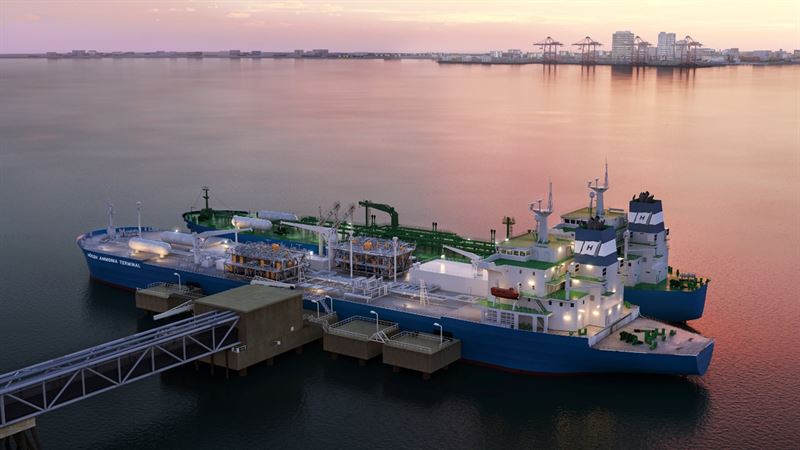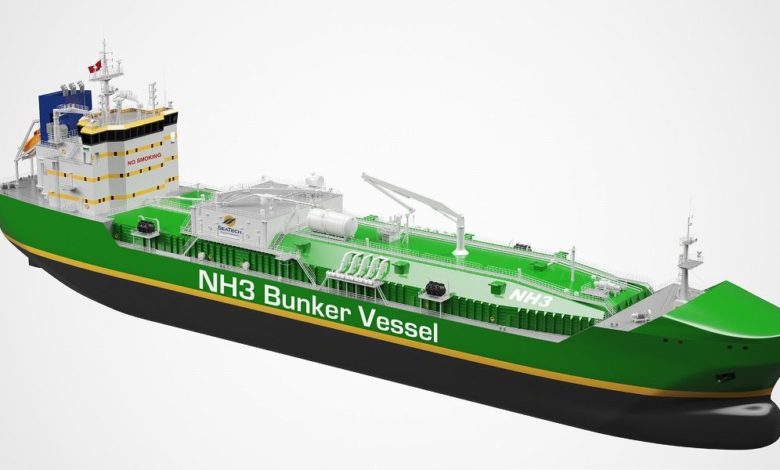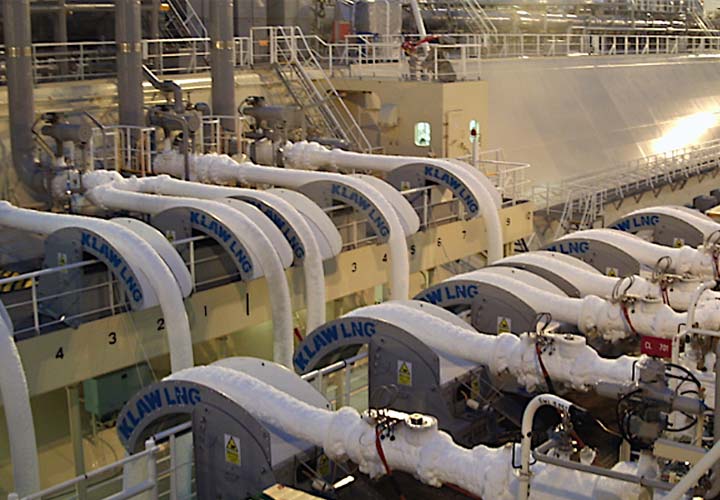Maritime developments: on-water cracking, AiPs and Singapore bunker study releases first results
By Julian Atchison on May 05, 2023
Government € for on-water cracking, ammonia production

The Norwegian government will contribute €5.9 million towards development of an ammonia cracking system that can be installed on existing LNG vessels. Wärtsilä, Höegh LNG, the Institute for Energy Technology (IFE), the University of South-East Norway, Sustainable Energy and BASF SE are all partners in the project, which will result in a floating, relocatable terminal capable of providing on-demand hydrogen to consumers, via ammonia imports.
As a world leading provider of fast-track floating LNG terminals, we are well-positioned to support the transition to clean, carbon-free energy. New and innovative solutions will need to be developed and we look forward to working together to ensure we remain at the forefront of the energy transition.
Erik Nyheim, CEO and President of Höegh LNG in Wärtsilä’s official press release, 13 Apr 2023
In the Netherlands, a €3 million grant has been awarded to a group including SwitcH2, BW Offshore, MARIN, TU Delft, and Strohm for development of a floating hydrogen &/or ammonia production and storage facility which will be connected to an offshore wind farm. Project OFFSET will be based on SwitcH2’s proven FPSO vessel concept, with offshore production capacity to be connected to a wind farm by 2027. Hydrogen will be transported to shore either through existing oil & gas pipeline infrastructure, or via Thermoplastic Composite Pipe, a new solution developed by Strohm. Ammonia will be transported to end-users by shuttle tankers.
AiPs: Korea’s first ammonia FSRU, Singapore bunker tanker
Lloyd’s Register has awarded Approval in Principle to Hyundai Heavy Industries and Korea Shipbuilding & Offshore Engineering (KSOE) for their ammonia Floating Storage and Regasification Unit (FSRU) design. The news follows a development agreement between the parties signed last December. Korea’s National Oil Corporation is also part of the project, exploring infrastructure that will need to be acquired or constructed for the import of ammonia into Korea.
The development of FSRUs that can respond flexibly to the operating environment in a situation where the marketability of ammonia is increasing is an important element in the industrial value chain.
Sung-Gu Park, North East Asia President of Lloyd’s Register in his organisation’s official press release, 25 Apr 2023

At Singapore Maritime Week, RINA has awarded AiP to SeaTech Solutions and Fratelli Cosulich Bunkers for their 21,000 m3 ammonia bunker vessel design. Joint development of this design began in November 2021, with the tanker intended to perform ship-to-ship bunkering in Singapore.
Ship-to-ship ammonia transfer

H2Carrier and Trelleborg Gas will collaborate to develop a safe, reliable and efficient solution for side-by-side offloading of ammonia from the P2XFloater™ FPSO under sheltered, near-shore conditions. Work will be based on Trelleborg’s existing KLAW LNG technology, which has already been upgraded to be able to be used with liquid ammonia. This solution will allow any P2XFloater™ vessel to act as an export terminal, minimising the need for on-shore infrastructure.
GCMD unveils results of Singapore bunkering study
While the full report will be publicly released at a later date, the Global Centre for Maritime Decarbonisation and partners DNV, Surbana Jurong and the Singapore Maritime Academy have presented their key findings at Singapore Maritime Week. Commissioned in January 2022, the Safety and Operational Guidelines for Piloting Ammonia Bunkering in Singapore concludes that:
- risks identified for conducting pilots in the Port of Singapore were found to be low or mitigable…paving the way for a pilot project to take place at three identified sites.
- individual fatality and injury risks depend on the flow rate of ammonia, the number of transfer operations, duration per transfer operation, and the length of piping and transfer arms.
- more than 400 potential risks were identified and assessed based on four technically feasible operational concepts: breakbulk and bunkering at anchorage, as well as shore-to-ship transfer and cross-dock transfer at two land-based sites for potential ammonia bunkering. All of the identified risks are manageable with mitigation measures.
- ammonia carriers will need to act as proxies for ammonia-fueled vessels in pilot projects, due to the latter not being commercially available.
This study gives authorities a very practical, comprehensive view of the costs associated with designing a port that supports the safe transfer and storage of this toxic but game-changing alternative fuel.
Tan Wooi Leong, Managing Director, Energy & Industrial, Surbana Jurong, in GCMD’s official press release, 27 Apr 2023
Safety lies at the heart of the guidelines that DNV helped to develop for this pilot in Singapore. Further pilots and studies are key to understand, assess and mitigate safety risks associated with using ammonia fuel onboard the world fleet.
Knut Ørbeck-Nilssen, CEO of DNV Maritime, in GCMD’s official press release, 27 Apr 2023
In preparation for the execution of an ammonia bunkering pilot in Singapore, GCMD is working with the Singapore Maritime Academy to train operators to handle ammonia as a marine fuel. SMA has incorporated ammonia handling into their Advanced IGF course, which first ran in March this year. GCMD is also working closely with Oil Spill Response Limited to develop emergency response procedures.